With a name like ‘Indian Hemp’ somebody might think this common plant is smokable. Well, it isn’t. In fact the stuff is toxic to ingest in any form and may cause cardiac arrest!
Native Americans may have used it for various aliments, but there are no modern medical benefits. Indeed not. The sap can cause blisters in people whose skin comes into contact with it. It’s also poisonous to livestock. (Photos below taken 22 June 2014.)
Indian Hemp was found growing in the same location as wild parsnips.
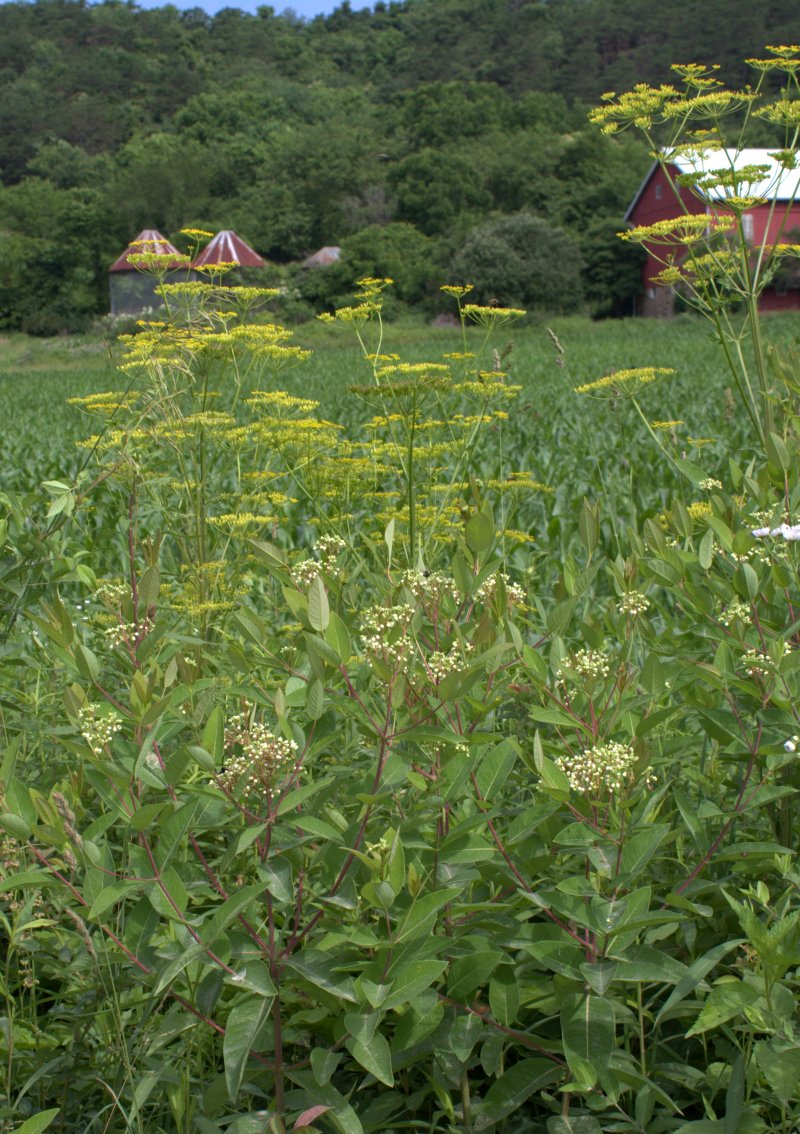
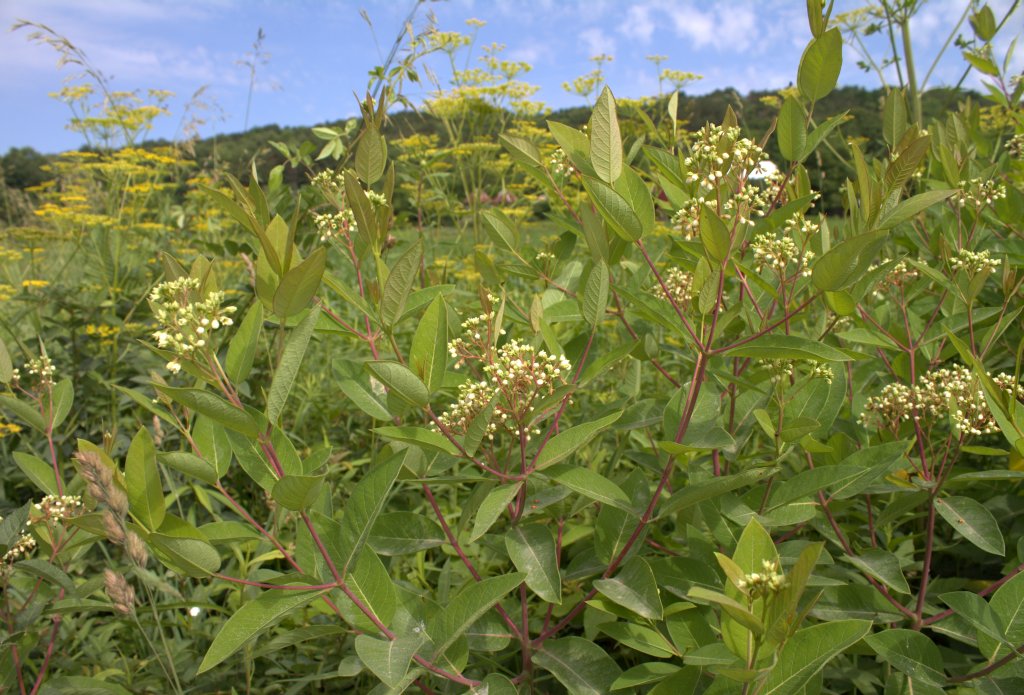
Many Internet resources – and I use that term lightly – have confused Indian Hemp or Indianhemp, Apocynum cannabinum, with smokable hemp or Marijuana, Cannabis sativa. Somes sites use the term interchangeably as if they were the same plant. These two plants are not related and the only thing they have in common is that they can be used for fiber. “Indian hemp” may also be a common name used for Cannabis indica or the sub-species indica of Cannabis sativa.
Indian Hemp that we’re talking about is a member of the Dogbane family, Apocynaceae, and may also be commonly known as dogbane, common dogbane or hemp dogbane. The genus name Apocynum literally means “poisonous to dogs”, so even the name of the plant is telling us to beware.
Like so many weedy plants Indian Hemp can be found growing
at the edge of fields, along fence rows and at the side of roads across the U.S. and Canada where it’s native. This poisonous perennial can be found in every state in the U. S. except Alaska and Hawaii and in the majority of provinces in Canada.
The identification of Indian Hemp is straightforward. Blooming in the first half of summer it holds small white flowers in loose clusters at the tips of red stems.
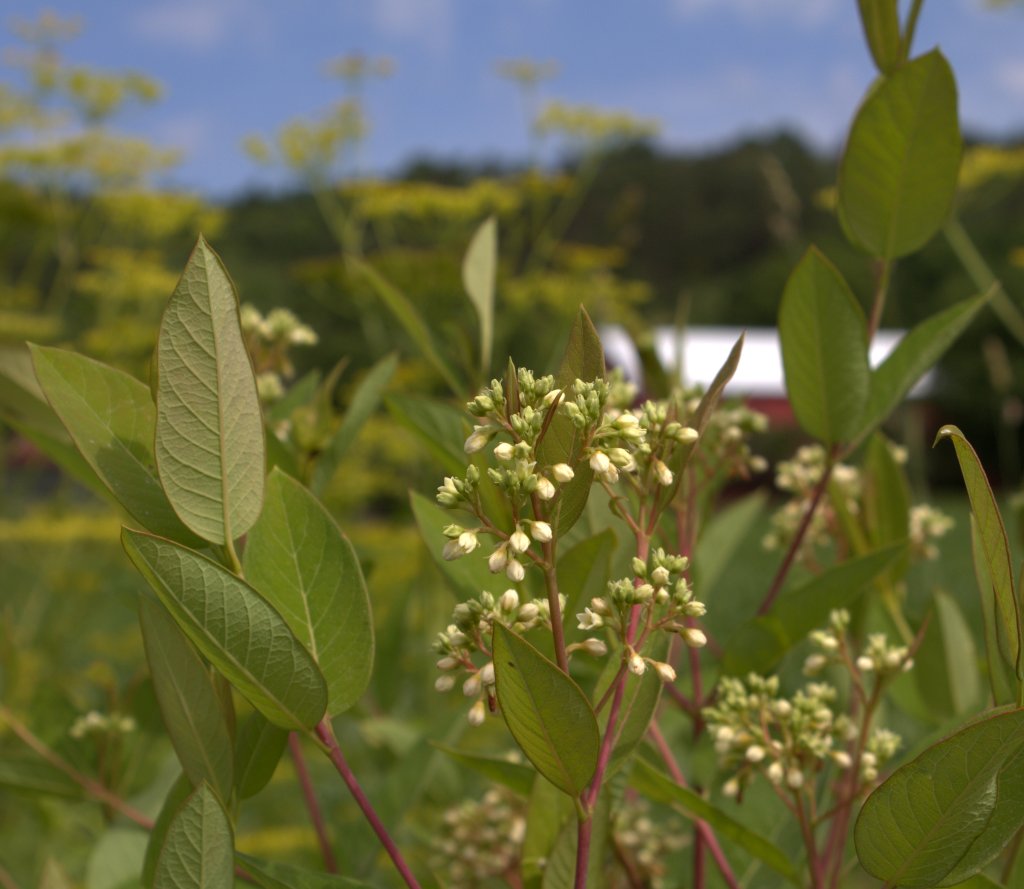
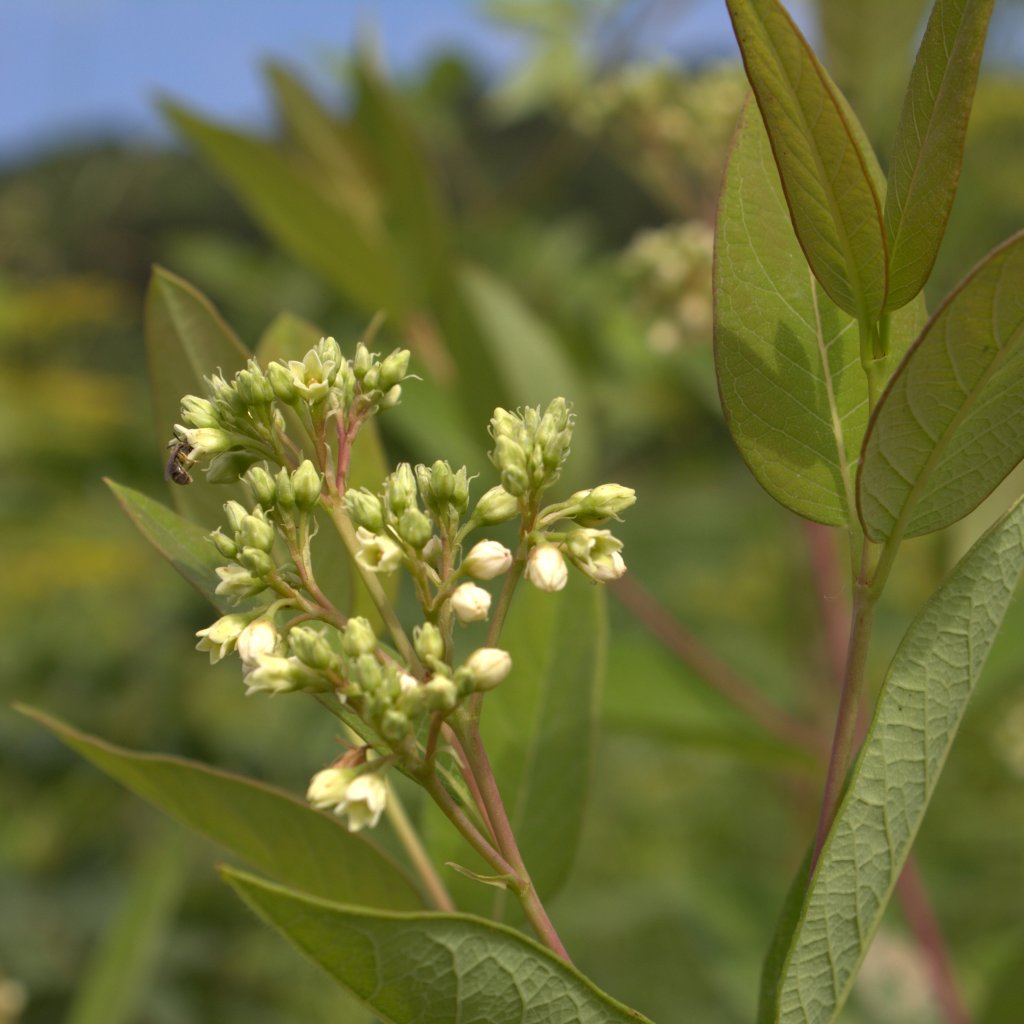
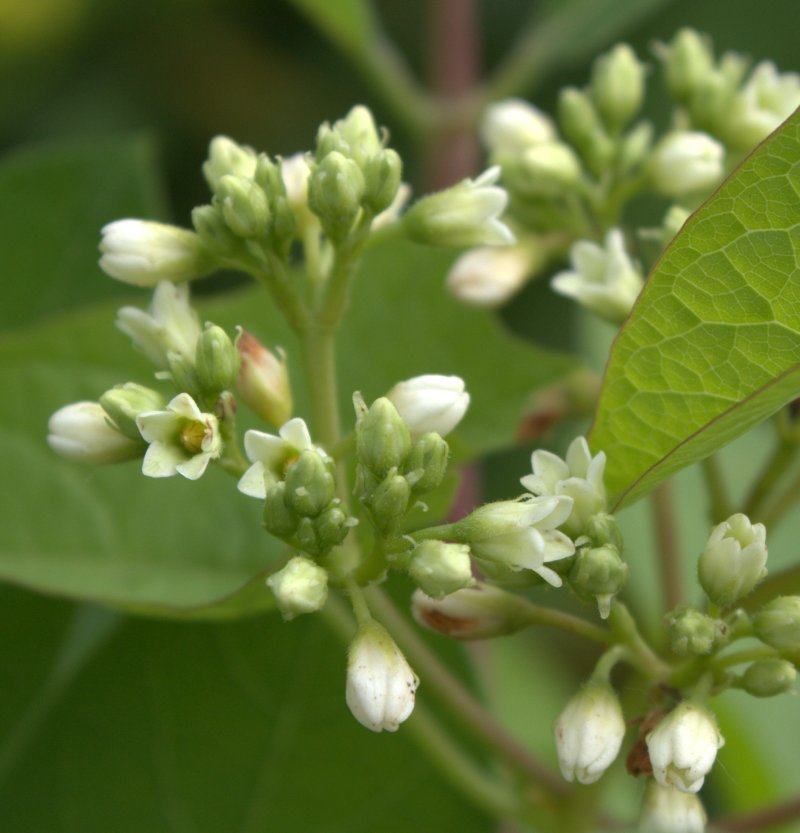

The large oval-shaped leaves are pointed and have short stems.
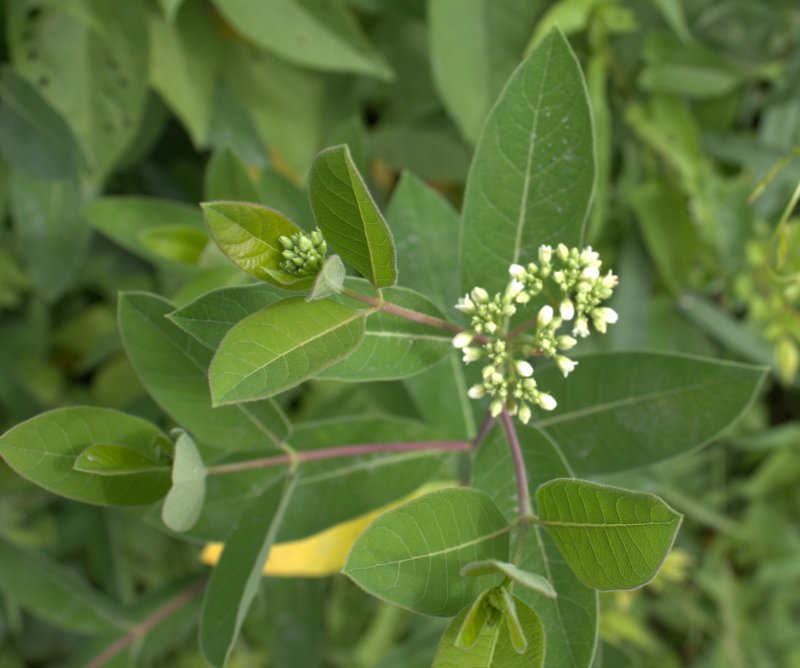
As the Indian hemp plant continues to grow more leaves and more flower clusters are produced. The leaves nearer the top of the plant being smaller than those lower on the stem. The blooming period for this perennial is three weeks or longer.
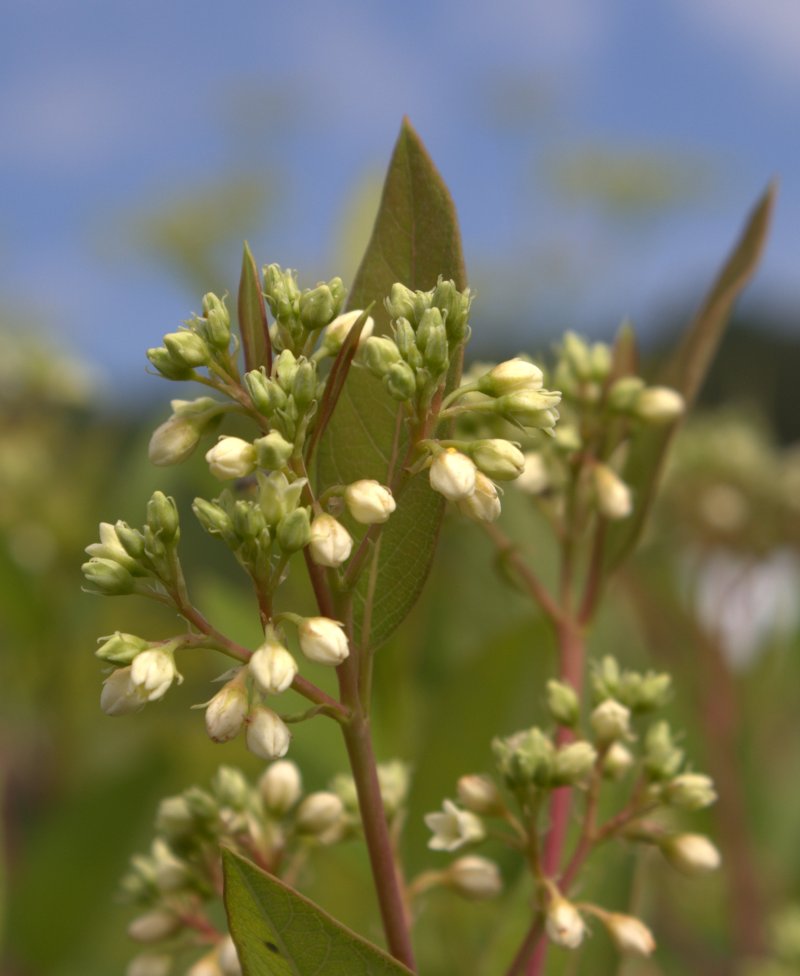
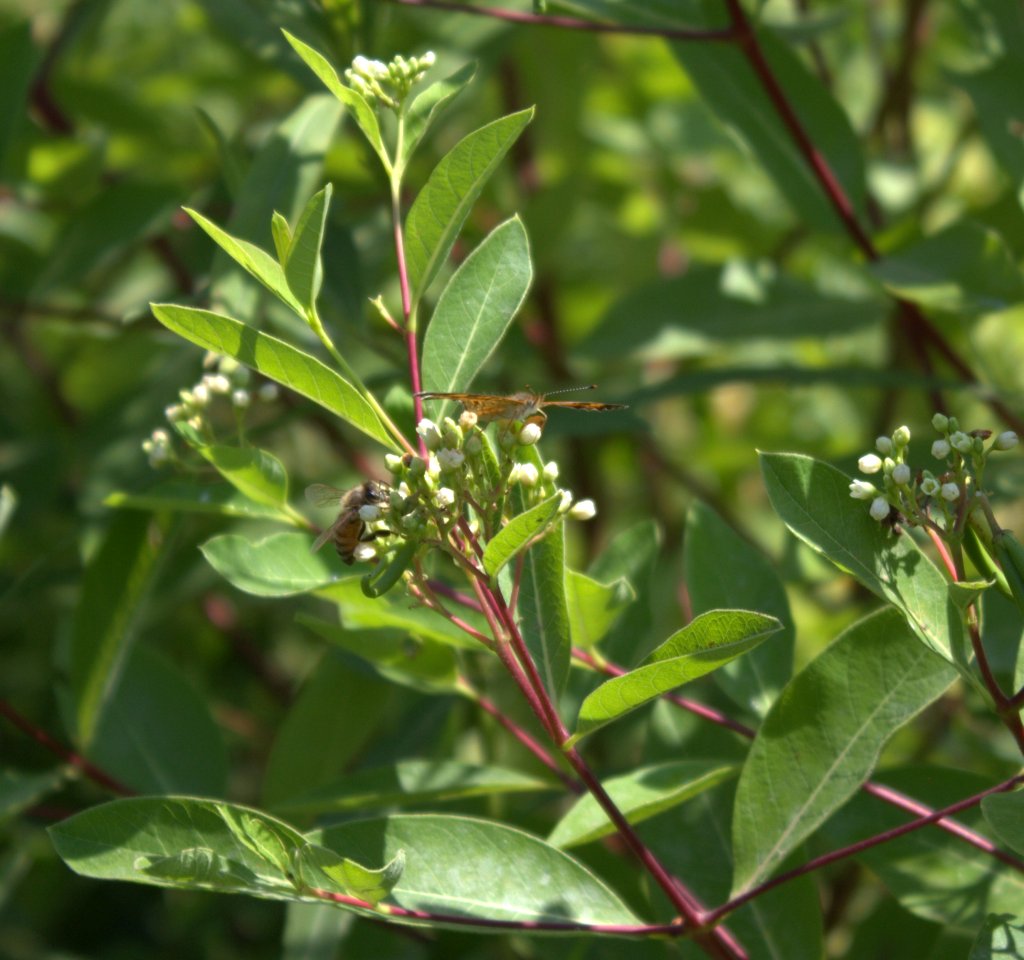
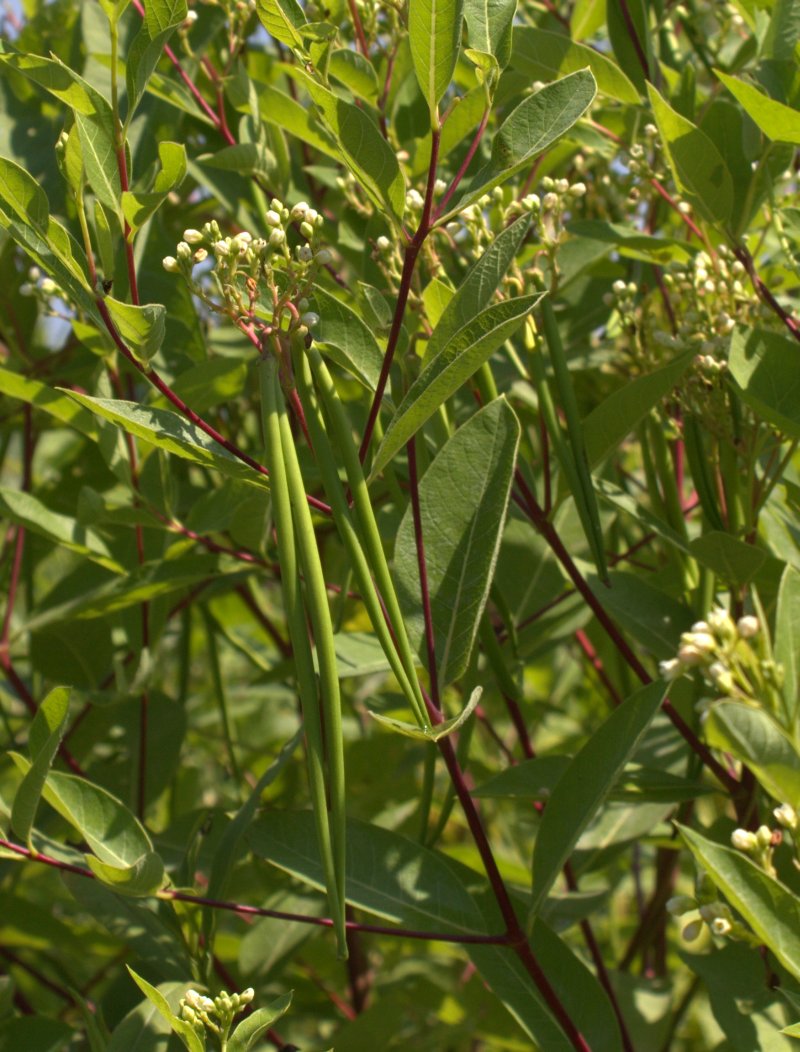
The red stems, large oval leaves and long seed pods make Indian Hemp easy to identify. Remembering that dogbane is another common name for this plant should help to remind us that it’s poisonous. Take caution in handling dogbane!